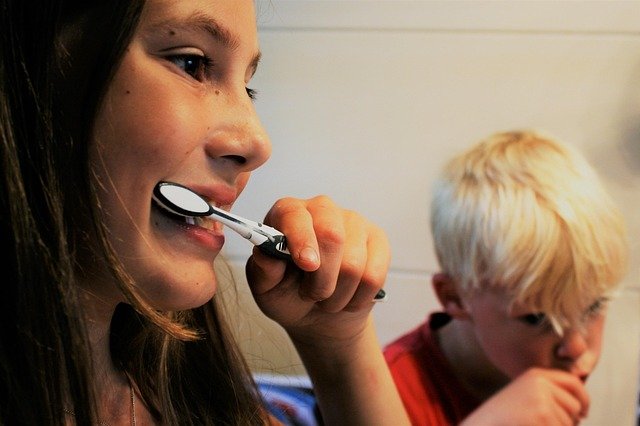Simple home tests to identify common metal irritants
Many people develop redness, itching, or discoloration from metal jewelry. This short guide explains simple, safe checks you can do at home to narrow down likely irritants, whether you wear metal bracelets, leather bands, or fabric straps. Practical steps cover visual checks, spot tests, and care tips to reduce reactions.

Metal contact reactions on wristwear can be confusing: sometimes the culprit is a visible alloy, other times a hidden plating, closure, or an interaction with leather or fabric. This article outlines straightforward, noninvasive home tests and observations you can use to identify common metal irritants in bracelets and related items. The goal is to give practical steps you can perform with items already at home and to help you communicate more clearly with jewelers or clinicians about sizing, measurement, and material issues.
This article is for informational purposes only and should not be considered medical advice. Please consult a qualified healthcare professional for personalized guidance and treatment.
How can alloys cause skin irritation?
Alloys—mixtures of metals—are a frequent source of contact reactions because they often contain small amounts of nickel, copper, or other sensitizers. A simple test is a visual and odor check: look for discoloration where the metal rubs the skin, and sniff for a faint metallic or acidic smell after wear. Another low-tech test is the “wet-skin” check: dampen the skin briefly and press the metal; darker stains or greenish marks suggest copper content, while brownish or grey tarnish can point to other alloys. Note the bracelet’s markings for standard hallmarks, and consider traceability questions when sourcing replacements.
Do finishes and coatings affect reactions?
Finishes and platings can mask base alloys that irritate. Polish, rhodium, gold plating, or lacquer can protect against direct contact, but wear, abrasion near closures, and exposure to sweat will eventually expose the underlying metal. Use a cotton swab with a small amount of mild detergent to gently rub a concealed area, then check for color transfer on the swab. If color or residue appears, that indicates plating loss or a reactive base metal. Keep in mind that finishes designed for aesthetics can change over time—patina or wear may reveal the base alloy and trigger new symptoms.
Can patina or tarnish trigger irritation?
Patina and tarnish are chemical changes on metal surfaces and can increase skin irritation for sensitive individuals. A quick home check is to press a clean, dry white cloth against the metal after a period of wear; visible discoloration on the cloth suggests active tarnish. For suspected silver or copper, try a mild baking soda paste on an inconspicuous spot to remove tarnish and observe whether skin reactions lessen when worn afterward. Remember that removing patina may reduce irritation temporarily but won’t remove allergenic metals embedded in the alloy.
Are hypoallergenic metals truly safer?
Labels like “hypoallergenic” can help narrow choices, but they’re not guarantees. Commonly better-tolerated options include titanium, surgical-grade stainless steel, niobium, and solid gold of higher karat. A simple home approach is to alternate a suspect bracelet with a known hypoallergenic one for a few days and note any difference in skin response. Keep records of closures and measurement changes: sometimes reactions occur at points of friction like clasps or soldered seams, not the main band. Traceability and sustainable sourcing notes from sellers can also indicate whether alloys or plating processes were used.
What role do sizing, measurement, and closures play?
Improper sizing or tight closures increase friction and sweat buildup, which can exacerbate irritation. Measure snugness by placing a finger under the bracelet—if you can’t fit one finger, it’s likely too tight. For leather or fabric straps, moisture can trap salts against metal findings; test by wearing the band for a short controlled period during light activity and inspect both the metal and band edges. Check closures and jump rings for exposed solder or rough edges that might abrade protective finishes. Resizing and straightforward repair by a local jeweler can often reduce pressure points and limit exposure to irritated skin.
How can cleaning, repair, packaging, sustainability, and traceability help?
Regular cleaning reduces corrosive residues that accelerate metal breakdown. Use mild soap and water, dry thoroughly, and avoid harsh chemicals that strip protective platings. For repair or resizing, request details about solder materials and replacement alloys to maintain hypoallergenic performance. Packaging that includes material declarations, batch numbers, or traceability statements helps you track which piece caused a reaction. Consider sustainability notes too: recycled metals or transparent supply chains can offer clues about alloy consistency. If irritation persists, professional testing or patch testing by a dermatologist provides definitive answers.
Conclusion Home tests—visual checks, simple cloth or swab tests, rotation with known hypoallergenic pieces, and attention to sizing, closures, and finishes—can quickly narrow down likely metal irritants in bracelets. Combining careful observation with basic cleaning and properly documented repairs or purchases improves the chance of identifying the cause. For persistent or severe reactions, seek professional medical evaluation and consider materials with clear traceability and sustainability practices when replacing or repairing pieces.






